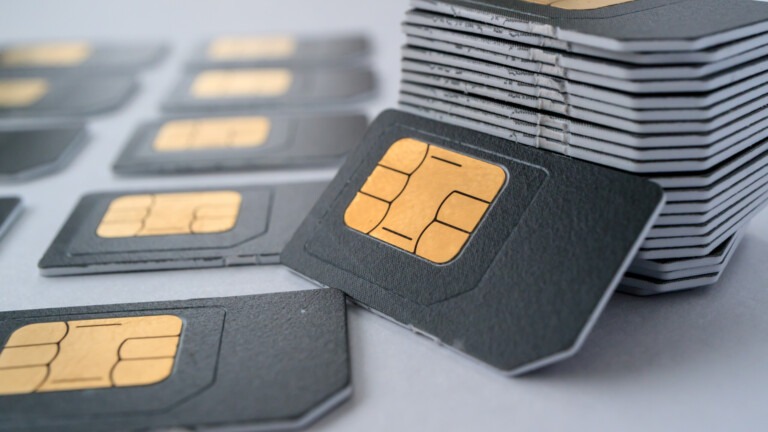What is a SIM Swap Attack?

A recent Cisco report suggests that there could be as many as 500 billion devices that connect to the internet by 2030 – and at the heart of those connections is a SIM card. Yet while most people know that SIMs are essential equipment for smartphones and tablets, SIM cards are commonly found in more devices than one may think.
This is important to note because SIM cards contain more than just information about connectivity; they can be used to unlock a wealth of personal information tied to your account with your mobile provider. The risks involved with a stolen SIM card, then, are perhaps higher than you might think – and the rewards for attackers can be substantial.
As such, SIM cards have become a target for some bad actors looking to target sensitive user data – and one of the most common tactics employed by these nefarious characters is the SIM Swap.

What is a SIM Swap Attack?
SIM Swap attacks can occur when an attacker contacts your mobile provider and convinces them to migrate your phone number to a SIM that they own, or physically removes the SIM card from your device and takes ownership of it. Once the attacker is in possession of your SIM, they can more easily access your account information, potentially even circumventing multi-factor authentication.
When signing in or signing up for accounts, particularly with secure organizations like banks or other financial services, providers will typically seek to verify a user through codes sent via SMS. When a hacker has possession of your SIM, however, those secure messages will now be routed through their devices rather than yours.
This tactic can grant them access to email password verifications or social media accounts – really, anything that utilizes SMS or your phone number to verify your identity is now at risk. Worse yet, the only indication that your account was transferred to another SIM is if your phone ceases to be able to make calls, and does not display any service available. This may not be immediately obvious, however, if your device utilizes a WiFi connection to transmit and receive data without reliance on the cellular network.
How SIM Swaps Affect IoT
Many of these risks are multiplied when it comes to IoT deployments, as the number of devices (and by extension, the number of SIMs) is far greater than the average consumer will typically employ. Furthermore, companies present a more attractive target for hackers, as the potential for financial gain from an organization is also much greater.
More troubling is the potential mayhem a SIM Swap could create within an IoT deployment. In a recent report from IT security firm Trend Micro, cybersecurity expert Craig Gibson laid out a scenario in which hackers using a SIM swap could change an IoT device’s activity profile, forcing the network to restrict it from performing certain activities. At scale, this could cripple automated network traffic management solutions reliant upon trend-based rules.
Unfortunately, this is only one of the potential incursions that could result from a SIM swapping attack.
“These attacks will spread to enterprise equipment and devices that run on SIM cards,” claims Trend Micro in the report, “and poses the ability to open doors to wider threats, including wiretapping, malware injections, large-scale fraud, poisoning of machine learning and supply chain attacks.”

How Do You Defend from a SIM Swap Attack?
Fortunately, there are a few ways that you can protect yourself from SIM Swap attacks. First and foremost, you should utilize multi-factor authentication whenever possible. This common-sense security measure can be set to use a function that does not require SMS but still verifies a user before logging into an account. If possible, you should also enable a PIN within your various accounts, so that even if your device is compromised, there is still an additional layer of protection against attackers.
If you are utilizing a Soracom SIM, you can enable our IMEI lock setting. This will allow you to prevent your SIM from working with anything other than the physical device you specify at setup. You can also utilize our event handler service to limit the amount of data that can be used per SIM. This will help prevent a misplaced or stolen SIM from incurring large fees for data usage.
Of course, if you do unfortunately become the victim of a SIM swap attack with your Soracom SIM, please reach out to our Customer Reliability Team immediately so that they can assist you.
It Pays to Stay Vigilant
Whenever there is information that has value to someone, there will likely always be malicious attackers trying to obtain that information. As such, it is always important to be mindful of your digital security and take any steps to mitigate your risk and increase your level of security, whether you believe your data is sensitive or not.
………………..
Do you have questions about an IoT project? Speak with one of our experts today to learn how Soracom has helped more than 20,000 innovators deploy, scale, and secure their IoT projects.





